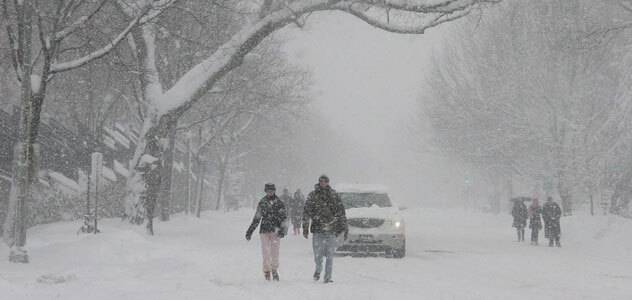
As winter is quickly approaching, it is important to have a plan in case of a natural disaster emergency. Winter in Iowa brings heavy snowfall, ice, heavy winds, sleet, and freezing rain. The first snowfall is approaching (sigh), and it’s important to be prepared when the worst of the worst hits. Here’s some things you can do to winter-proof your home and stay safe when a brutal winter storm hits.
Seal The Gaps
To prevent cold air and frigid drafts from circulating your property, you need to seal the gaps. Over time, your foundation might develop cracks, and sealing these up will help keep your home warmer, while lowering the energy costs to heat your home. Pay close attention to your foundation, drywall, window seals, and door frames. Frigid air can sneak through even the smallest gaps. Sometimes it might be hard to see a crack in the foundation, but when the temperature drops below freezing you will definitely be able to feel it. Keep the caulk handy, so you can quickly patch up your property. Caulk or foam is affordable and can be purchased at your local hardware store.
Invest in New Windows
If your windows are damaged, old, or cracked, your first priority before winter comes is to invest in new windows. Cold air can slip through your windows with even the smallest cracks. Manual fixes and sealings are helpful, but they will only last so long before it’s time to consider purchasing new insulated windows.
Add Insulation
Attics and garages can get teeth-chattering cold in the winter. Usually these rooms in your home aren’t built with insulation because they aren’t considered living spaces. Today, many attic lofts are converted into bedrooms. Before a cold winter hits, get installation installed in every room in your home, including your garage. Your car will thank you when your garage isn’t freezing cold. Insulated attached garages can also help reduce the amount of cold air that enters your home through the entryway.
Change Furnace Filter
In the winter, your furnace gets a workout from constantly trying to heat your home. It is important to change your furnace filter when you do decide to turn your heat on. If your furnace hasn’t been working properly or needs frequent maintenance, you should address these issues before the coldest weather hits. If you neglect to get your furnace tuned up, you should be stuck without heat on the coldest day of the year. Furnace repairs can take while to fix when everyone else is calling the local repair man too. Be proactive and get your furnace up sooner than later.
Check Your Sump Pump
Every few months, you should check to make sure your sump is working properly. If you pour a few gallons of water into the sump pit, it should automatically turn on. When the snow melts away, your sump pump will be constantly running to prevent water from entering your home.
Clean Your Roof
Damaged roofs can cause leaks when snow and sleet start to build up. If your roof has many leaves, sticks and other debris collecting from trees nearby, you should get up on your roof and clean it before the first snowfall hits. Leaves and pine needles hold moisture which can cause roof leaks. Make sure to check carefully for missing shingles or clogged gutters. If your drain pipes aren’t able to drain the moisture that collects on your roof, the water will enter your home and cause unwanted leaks.
Conduct an Energy Audit
A home energy audit will help to identify any air leaks or rooms that need more insulation. When your property has inadequate insulation, you run the risk of freezing pipes or ice dams that can cause water to flood into your home. A home energy auditor will help reveal any potential problems that you can fix before winter hits.
Winter Storm Disaster Restoration by ServiceMaster
ServiceMaster by Rice provides disaster restoration services to Atlantic, Carroll, Spencer, Storm Lake, Okoboji, Cedar Rapids and Fairmont, Minnesota. When a heavy snowfall damages your home or you experience water damage from winter storms, call the experts at ServiceMaster by Rice for natural disaster restoration.

